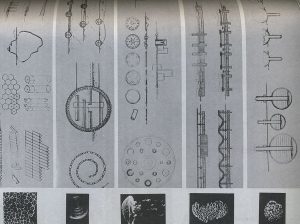Reflections from the Field #2: Cultural Heritage Conservation as a Data Problem
For the second in our series of blog posts – ‘Reflections From The Field’ – our 2018 School of Data Fellow, Ben Hur Pintor, is inspired to ask questions about cultural heritage data.
“Can this be considered a data problem?” asked Tatine, one of the participants of the Data Pipeline training conducted by Hani and I, referring to her work on the conservation of the Mangyan script and language of the Mangyan indigenous people in Mindoro, Philippines.
The question piqued my interest because, as mentioned by Tatine, indigenous communities rarely have physical records of the information related to their culture and language. Most of the time, this information is passed from generation to generation as a form of oral tradition or oral history. So how do we take something intangible and make data work for it?
Fieldworks
One of the most common ways of working with language and other cultural heritage data is through the conduct of fieldworks. Terry Crowley’s Field Linguistics: A Beginner’s Guide highlights this process, discussing ethical issues such as informed consent and voluntary participation, the importance of selecting language helpers — people who speak the language you are studying but also share a common language with you, and how to keep track and archive the data using daily records, filing systems, and computer storage.
Archives
Creating digital archives is also one way to work with cultural heritage data. This usually involves scanning, transcribing, and digitizing artifacts, artworks including poetry and song, and even places such as sites and monuments.
“Conservation measures applicable to the physical heritage are not appropriate for the intangible heritage. It is necessary therefore to establish digital archives by recording these cultural expressions on both visual and audio media to facilitate their survival and transmission to future generations.“ (Outline of Digital Archiving Project, UNESCO)
Linked Open Cultural Heritage Data
Linked open data is open data available on the world wide web in a standard markup format. It has a lot of potential uses in cultural heritage conservation especially when utilized together with traditional cultural heritage institutions such as libraries, archives, and museums. With linked open data, users can create and share their own cultural heritage experiences using different media, applications, maps, etc.
“We believe linked open data has the potential not just to preserve cultural heritage for users, but to offer users new opportunities to understand, manipulate, and recreate cultural heritage experiences.” (Linked Open Data for Cultural Heritage, J. Marden, 2013)
The combination of data, technology, and cultural heritage is an interesting one and it will be fascinating to see how these three fields interact, grow, and collaborate with each other in the future.


